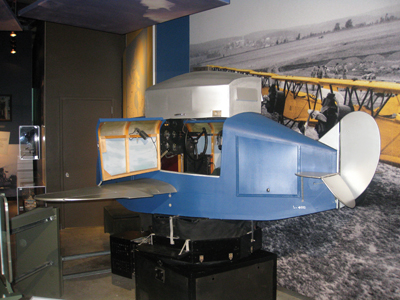
Features
Safety
A Look Back: The foresight of Edwin Link
Even Link himself did not know how prescient he was nor how successful he was going to be.
September 27, 2010 By Raymond Canon
Aviation enthusiasts are prepared to discuss any number of topics connected to the industry. One rather unusual topic that recently came up was the slowest flying plane ever heard of. My contribution to the discussion was the Zaunkoenig (Wren), two examples of which were built early in 1945 by the students of the Technical University of Brunswick, Germany. The plane itself had been designed in 1939.
 |
The Wren had a cruise speed of 53 kilometres-per-hour and it needed only 100 metres for take off. Fortunately, both aircraft survived the Second World War. One was taken to England for testing at RAE Farnborough, after which many pilots, both embryonic and skilled, flew it before it was placed on display in a German museum.
It had to be admitted, however, that the Wren couldn’t touch the Link Trainer when it came to slow speed; the latter flew at precisely zero miles-per-hour. There are certainly some of our older readers that actually “flew,” or rather, trained in one during the Second World War when they were used by just about every participating air force.
The trainer bears the name of Edwin Link, an American from Binghamton, N.Y. His first creation was produced in 1929 in response to a need for a safe way to teach pilots how to fly on instruments. The need at that time could be said to be a dire one, since no fewer than 12 air mail pilots (seconded from the air force) were killed in a 78 day period due to their lack of knowledge of flying on instruments.
The answer to this problem came out of a demonstration by Link himself. He flew on instruments in response to a meeting held to address the issue. The weather was so foggy that the U.S. Army Air Corps considered it to be unflyable. This demonstration earned him an initial order of six Trainers costing $3,500 each. He never looked back.
When he made this sale, even Link himself did not how know prescient he was nor how successful he was going to be. While sales were encouraging in the 1930s, it was the Second World War that created a huge demand for the Trainer. Thousands of fledgling pilots in Canada, the United States and elsewhere made use of the machine and it is said that, at the height of its production, one came off the line every 45 minutes. By the time the end came for this demand, no fewer than 10,000 “Blue boxes” had been turned out, more than most military aircraft at the time or since then.
Link was not satisfied with the initial product. At an early stage, the initial C-3 gave way to an enhanced model, the Ant-18 (Army Navy Trainer Model 18). One of its most desirable characteristics was to better simulate blind flying. Canada not only produced this version for itself but for the U.K. RAF as well.
It is hard to estimate the financial savings brought about by the use of the Link during the Second World War, not to mention the number of lives saved by the knowledge gained from its use. It is said that over half a million aviators in the U.S. alone used it in their training and, if you add in all the other countries that recognized its value and employed it, the total number could be approaching one million – undoubtedly some Wings readers are among that number.
Small wonder, too, that there are many Link Trainers to be found in museums throughout the world, with the closest to our editorial offices being a scant 25 miles (40 kilometres) away at the Canadian Harvard Aircraft Association at the Tillsonburg Airport in Tillsonburg, Ont.
It needs to be said that the Link Trainer concept did not rise and fall with its success in the Second World War. It is still alive and well and the sequel is to be found in, surprise, Canada. That is another story in its own right that will appear here in due course.